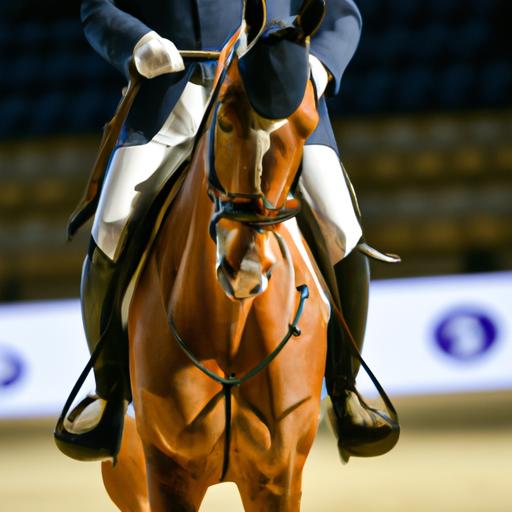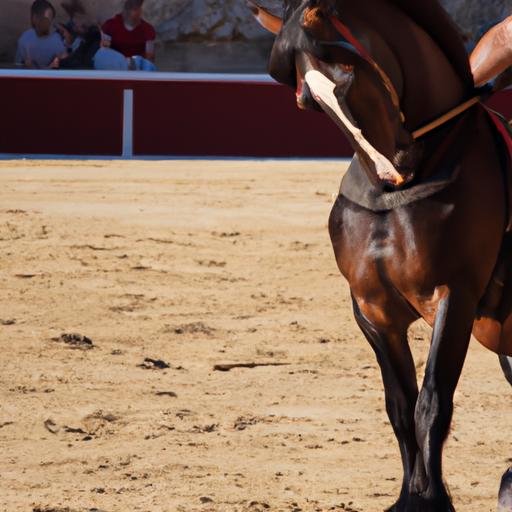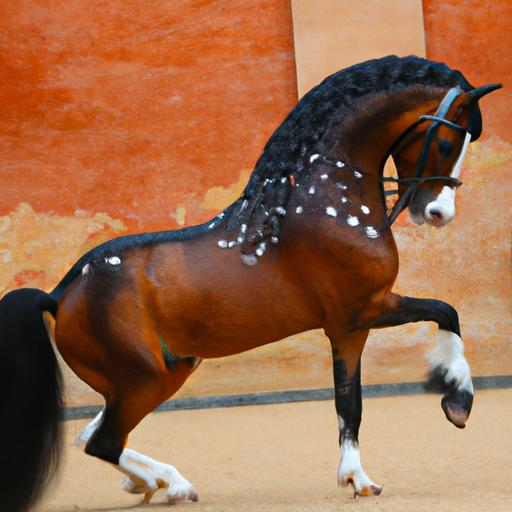Uncover the extraordinary legacies of notable dressage horses throughout history and their profound impact on the sport’s evolution. Explore dressage horse history now!
Introduction

Do you ever wonder about the fascinating journey of dressage horses throughout history? How their training techniques have evolved over centuries, shaping the sport we know today? Join me as we uncover the captivating story behind dressage horse history and explore the significance it holds in our equestrian world.
Importance of understanding dressage horse history
As equestrians, whether beginner or seasoned, we often find ourselves immersed in the enchanting world of dressage. Yet, few of us truly grasp the profound impact that history has had on this elegant discipline. Understanding dressage horse history unlocks a treasure trove of knowledge, allowing us to appreciate the evolution of techniques, the remarkable partnerships, and the undeniable beauty that has shaped this sport.
Definition and significance of dressage
Dressage, derived from the French word “dresser” meaning “to train,” is an ancient equestrian discipline that emphasizes harmony and communication between horse and rider. It is often referred to as “the ballet of horses” due to its artistic nature, where horse and rider perform a series of precise movements with grace and elegance.
Dressage holds immense significance not only in the equestrian world but also as a foundation for various other equestrian disciplines. Its principles of balance, suppleness, and obedience form the bedrock for successful horsemanship, enabling horses and riders to excel in disciplines such as eventing, show jumping, and even therapeutic riding.
So, let’s embark on this captivating journey together, delving into the origins of dressage and uncovering the remarkable stories that have shaped the history of these majestic horses. Join me in Section 2 as we explore the ancient origins and contributions of civilizations that laid the groundwork for dressage as we know it today.
**
Origins of Dressage

Ancient Origins: Laying the Foundation for Dressage Horse Training
Have you ever wondered how dressage horse training came to be? Let’s voyage back in time and explore the ancient origins that set the stage for this remarkable discipline.
In ancient civilizations, such as Mesopotamia and Egypt, the horse was revered for its strength and beauty. It was during this time that the foundations of dressage horse training were laid. Horses were trained for war and ceremonial purposes, requiring them to be agile, obedient, and in tune with their riders. This early form of training emphasized the importance of balance, collection, and responsiveness, principles that continue to shape modern dressage.
Contributions of Greek and Roman Civilizations: Pioneers of Equine Excellence
The Greek and Roman civilizations elevated the art of horsemanship, making significant contributions to the development of dressage. Let’s explore their legacy.
The Greeks, with their love for the equestrian arts, refined horse training into a more systematic approach. They introduced the concept of gymnastic exercises for both horse and rider, emphasizing the importance of harmony and balance. The famous Greek cavalry, renowned for their skilled horsemanship, further influenced the evolution of dressage.
The Romans, building upon the Greek foundations, integrated horsemanship into their military strategy. Their training methods focused on creating a disciplined and obedient cavalry. The Roman cavalry’s precision and control in battle showcased the effectiveness of dressage principles. The influential writings of Xenophon, a Greek cavalry officer, also played a crucial role in spreading knowledge and understanding of horsemanship.
Development during the Renaissance Period: A Rebirth of Equestrian Artistry
The Renaissance period witnessed a renaissance of equestrian arts, breathing new life into dressage training techniques. Let’s uncover the transformative impact of this era.
During the Renaissance, horses became a symbol of power and prestige. The nobility sought to showcase their wealth and mastery through equestrian displays. This led to the refinement of dressage as an art form, with an emphasis on elegance, precision, and grace. The Spanish Riding School, established in the 16th century, became a bastion of classical dressage, preserving and propagating the principles that continue to shape the sport today.
Join me in Section 3 as we explore the evolution of dressage techniques, delving into the influence of the Baroque era, the contributions of influential equestrians, and the advancements in training methods and equipment that have shaped modern dressage.
**
Evolution of Dressage Techniques
Influence of the Baroque era on dressage
The Baroque era, characterized by its grandeur and opulence, left an indelible mark on the world of dressage. During this period, dressage training techniques transformed into an art form, showcasing the harmony between horse and rider in stunning displays of precision and elegance.
The Baroque period, spanning from the 16th to the 18th century, saw the rise of magnificent courtly displays, where dressage became an essential element of royal entertainment. The nobility of the time recognized the beauty and grace of these majestic creatures, and dressage became a symbol of power and refinement.
Equestrian masters such as Antoine de Pluvinel and François Robichon de la Guérinière revolutionized dressage training during this era. They emphasized lightness, balance, and suppleness, focusing on the horse’s natural abilities rather than forceful techniques. These principles laid the foundation for modern dressage, emphasizing the importance of harmony and communication between horse and rider.
Contributions of influential equestrians throughout history
Throughout history, exceptional equestrians have made significant contributions to the evolution of dressage techniques, refining and perfecting the art of communication with these magnificent creatures. Their dedication and expertise have shaped the sport we know and love today.
One such influential figure was Gustav Steinbrecht, a renowned equestrian and author of “The Gymnasium of the Horse.” Steinbrecht’s emphasis on lightness, balance, and collection revolutionized dressage training in the 19th century. His teachings emphasized the importance of a correct seat, clear aids, and progressive training methods.
Another notable figure is Alois Podhajsky, director of the Spanish Riding School in Vienna. Podhajsky’s leadership and dedication to preserving classical dressage traditions ensured the continuation of these techniques into the modern age. His influential book, “The Complete Training of Horse and Rider,” remains a cornerstone of dressage education.
Advancements in training methods and equipment
As our understanding of horses and their physical capabilities has evolved, so too have the training methods and equipment used in dressage. Technological advancements and research have allowed us to refine our approach, creating a harmonious partnership between horse and rider.
Modern dressage training methods embrace scientific principles, focusing on biomechanics, psychology, and conditioning of the horse. Understanding how the horse’s body works enables us to develop training techniques that maximize their potential while prioritizing their welfare.
Moreover, advancements in equipment, such as specialized saddles and bridles, have aided in achieving optimal communication and comfort between horse and rider. These innovations have contributed to the refinement of dressage movements, allowing for greater precision and ease of execution.
Join me in the upcoming Section 4, where we explore the role of dressage in modern times, its influence on equestrian competitions, and the establishment of international standards that govern this captivating discipline.
**
Dressage in Modern Times
Role of dressage in equestrian competitions
Have you ever marveled at the breathtaking performances of dressage horses in competitions? The role of dressage in equestrian competitions cannot be overstated. It serves as a cornerstone discipline, showcasing the pinnacle of harmony, precision, and athleticism between horse and rider. Dressage tests, executed with elegance and finesse, are an integral part of various equestrian events, including the Olympic Games, World Equestrian Games, and national championships.
Establishment of international dressage standards and organizations
To ensure fair competition and maintain consistency in judging, international dressage standards and organizations play a vital role. The Federation Equestre Internationale (FEI), founded in 1921, is the governing body for international equestrian sports, including dressage. It establishes rules and regulations, sets requirements for competitions, and oversees the development of dressage worldwide. Through the FEI, dressage has gained global recognition and continues to captivate audiences across continents.
Prominent dressage horse breeds and their characteristics
Dressage horses come in various breeds, each with its unique characteristics and talents. The warmblood breeds, such as the Dutch Warmblood, Hanoverian, and Oldenburg, are highly sought after for their athleticism, grace, and trainability. These breeds possess the ideal combination of strength, agility, and temperament required for the demanding movements of dressage.
Additionally, the elegant and noble Lusitano and Andalusian breeds, originating from the Iberian Peninsula, have long been revered for their natural aptitude in dressage. Their compact build, expressive movement, and incredible collection make them a perfect fit for the intricate choreography of dressage tests.
As we delve deeper into the world of dressage horse history, Section 5 will unveil the fascinating stories of notable dressage horses that have left an indelible mark on the sport. Join me in discovering the legendary partnerships and achievements that have shaped dressage as we know it today.
**
Conclusion
In conclusion, delving into dressage horse history is like embarking on a captivating journey through time, where the elegance and mastery of these incredible creatures come to life. By understanding the roots and evolution of dressage, we gain a profound appreciation for the artistry and dedication that goes into this discipline.
Throughout this article, we have explored the importance of understanding dressage horse history, uncovering its deep-rooted significance in the equestrian world. From the ancient beginnings and influential civilizations to the advancements in training techniques and equipment, dressage has continuously evolved, shaping the sport we know and love today.
Notably, we have discovered the remarkable impact of legendary dressage horses and their achievements. These exceptional equine athletes have left an indelible mark on the sport, pushing the boundaries of what was thought possible and inspiring future generations of riders and trainers.
Moreover, the famous dressage horse partnerships have exemplified the harmonious connection between horse and rider. These iconic duos have showcased the epitome of skill, trust, and dedication, leaving a lasting legacy that continues to inspire equestrians worldwide.
As we move forward, it is essential to preserve dressage horse history for future generations. By honoring the past, we ensure the continued growth and development of this timeless discipline. So, let us celebrate the rich heritage of dressage and continue to strive for excellence in our own journeys as equestrians.
Thank you for joining me on this enlightening exploration of dressage horse history. Remember, at Horsemasterypro.com, we are dedicated to sharing our expertise and passion for the equestrian world. Join our community of horse enthusiasts and embark on a journey of mastery, where history and horsemanship merge.
**


